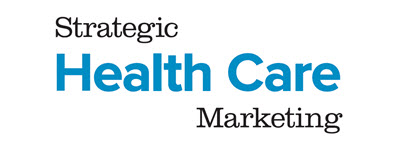Upcoming Event: An HOAleader.com Webinar for Condo and HOA Boards
HOA Board Members and Fiduciary Duties: What You Must Know to Fulfill Your Duty to Your Association and Protect Yourself from Personal Liability
Thursday, November 13, 2014
2-3 p.m. Eastern
HOAleader.com Members save $30!
Not a member yet? Sign up for a trial membership now.
When you volunteered to serve your community association as a board member, did you realize you were agreeing to set aside your own interests and act as a fiduciary on behalf of the entire association? Are you confident you know every scenario where you might trip up and expose yourself to personal liability by failing to live up to this important duty?
Set aside an hour of your time to learn what you need to know and ensure you’re not risking your own financial security by making common—but easily avoidable—mistakes while volunteering as an HOA board member.
Join us for in an in-depth webinar on November 13 led by two community association experts who will explain in layperson’s terms what it means to act as a fiduciary for your association.
You’ll learn:
- The legal definition of a fiduciary—and the real-life risks you face if you’re found to have breached your fiduciary duties
- The specific responsibilities you carry because of your fiduciary duties, including:
- What it means to act in a “representative capacity”
- Understanding the “business judgment rule”
- How to meet confidentiality requirements
- Tips to help you understand potential conflicts of interest and how they can trigger a breach of your fiduciary duty
- Best practices to help you avoid the most common conflicts of interest board members face
- Information to help you identify when providing full disclosure will diffuse conflicts of interest, along with practical suggestions for doing that properly
- What you need to know about insurance to protect you from claims of a breach of your fiduciary duty
- Plus much more!
Arm yourself with the knowledge you need to protect yourself and your association. Bring your entire board and make sure everyone knows these critical, fundamental concepts of good HOA governance. By proactively educating your entire board, you may just nip a potential conflict of interest problem in the bud. Register now for this informative event for community association board members.
Can’t attend on November 13? Order the recording.
| About Your Speakers | ||
 |
Debra A. Warren, PCAM, CCAM, is a senior vice president at Associa®. She has more than 25 years of experience in community association management and was founder and principal of a successful consulting practice after 15 years as president and CEO of a management firm in Northern California, which she sold in 2005. Warren has also been actively involved in the education of community management professionals and volunteer board members across the country. She has 18 years of experience as an educator and in 2010 was named by the Community Associations Institute as educator of the year.. | |
 |
Matthew Zifrony is a director with Tripp Scott, a law firm in Fort Lauderdale, Fla. He’s the president of one of the largest homeowners associations in Broward County and represents numerous condominium and homeowners associations in the tri-county area, providing counsel on such issues as collections, rules enforcement, contractual review, and association documents. Zifrony is past board member of the Community Association Institute. He earned a law degree, with honors, from the University of Florida and a bachelor’s degree, with honors, from the University of Florida’s School of Business Administration. | |
How Do Webinars Work?
A webinar is remarkably cost-effective and convenient. You participate from your home or office, using a regular telephone and a computer with an Internet connection. You have no travel costs, hassle, or commute time.
Plus, for one low price, you can get as many people on your condo or HOA board to participate as you can fit around a speakerphone and a computer screen. And now, with our special group membership offer, your entire board can attend—even from different locations. This offer requires an HOAleader.com Group Membership. When any group member orders, we will set up access for the entire group. Up to 10 users can attend for one low price. It’s another incredible deal as part of HOAleader.com Group Membership.
Because the conference is live, you can ask the speakers questions via the webinar interface. Many attendees tell us this is the most valuable part of the webinar.
You will receive access instructions via e-mail several days before the event. You don’t need any additional materials before the webinar starts. Your conference materials will be available for you to view, print, and download when you log in to participate in the event.
100% Satisfaction Guarantee
If you are not completely satisfied after attending an HOAleader.com event, let us know within 30 days, and we will refund 100% of your registration fee — no questions asked.
About HOAleader.com
HOAleader.com’s attorney editors and experienced journalists constantly research the latest developments in HOA law affecting homeowner and condominium associations across the U.S. Then we publish plain-English analyses of what those developments mean to you as an HOA leader, and what you need to do now to comply with HOA laws, steer clear of legal trouble, avoid or resolve conflicts within your homeowners association, make HOA management easier, and safeguard your community association’s property values and quality of life.
Not a member yet? Sign up for a free trial membership here.






